
It’s a new year and there is that nostalgia in the air of having only the best life has to offer with a clean slate and a new start. We send wishes to each other for more money, less sickness and an end to the COVID 19 pandemic. While dreaming is a good first step, the next one needs to happen if we are going to move towards our desires out there in dreamland. Often that’s where we get stuck – what is the next step to be healthy? How can I keep going till I actually get to my health utopia? Those were the questions that haunted me many years ago at the start of my health journey. I suffered from obesity, arthritis, fatigue, migraines and constipation. I started my journey all the way back in elementary school where I was one of the heaviest kids in the class. I enjoyed loads of junk food and ate one meal a day all day long. My size and health issues multiplied as I made my way through high school and college. As a sophomore in college my freshman year clothes stopped fitting. I went clothes shopping and was trying on my usual size 16 in the stores when it dawned on me that those clothes were to small. I was now a size 18. That was it! This had to stop. That was my turning point. I began a new health journey. One step at a time, making choices that were foreign and starting routines that were bizarre, I made the trip. I kicked those extra pounds to the curb and have never gone back to where I came from.
You can succeed at your health goals this year. Maybe you’re trying to lose weight or reverse your diabetes. Maybe you want more energy or just want to feel like yourself again. If you can conceive it, and your heart can believe it- then you can achieve it. I’ll share what I discovered along my journey and what keeps me going year after year.
1. Know Your Why – Is it Worth The Trip?
It’s one thing to want to feel and look great but it’s even more important to figure out why. Improving our health requires a decided commitment to making better choices everyday. Everyday for a long time. When your clear on your reasons for wanting to be healthier those same reasons give you the extra strength you need when your almost about to throw in the towel. That “why” will keep you looking from the present and up into the future, to the healthier version of you, which will be worth every sacrifice and effort.
My reason for continuing on this health journey year after year is the fact that it I get to live my fullest life as a healthy me. There’s always so much I want to accomplish and sick me doesn’t get a lot done. When I am healthy and vibrant I can enjoy the relationships that mean so much to me, I can focus and learn new things as I expand my horizons. The lifestyle choices I make everyday are worth it because health is my greatest wealth.
2. Study the map – Educate yourself
There is a lot of noise in the health space and its hard to decipher whose points are the most valid. I take my health information from the Bible, my understanding of human physiology and good science. With the convergence of these resources I always recommend a few basic principles to achieve optimal health – 1.eat an unprocessed plant-based diet, 2.daily exercise, 3.proper use of water inside and out, 4.reasonable exposure to sunshine, 5.clean air exposure, 6.adequate hours of sleep starting with early bed time, 7.proper stress management, 8. avoidance of unhealthy addictive substances.
Some helpful resources to learn more about lifestyle choices that are backed by the Bible, human physiology and good science include :
Books : 1. Ministry of Healing by Ellen G White, 2. Health Power by Aileen Ludington, MD, 3. Undo it by Dean Ornish, MD
Videos: 1. Forks over knives 2. Fat sick and nearly Dead
websites: 1. PCRM.org 2. nutrtionfacts.org
3. Keep Good Company – Find Support
It’s always easier to take a long journey when you have good company. That has been my experience on any adventure especially this life changing one. The changes you are deciding to make are not usually main stream and so your regular buddies will start to find you a little weird. It is going to help, big time, when you have folks around who understand what you’re doing and think your pretty cool for sticking to it. You may think you don’t know one such person but you never know. That co-worker of yours may just find it thrilling when invited to start a walking routine with you at lunch time. Your girlfriend miles away may find it cool to try out new plant based recipes with you. Maybe there is a healthy cooking program at the library where you’ll meet like minded individuals on a quest for the secret to great health.
I joined my local church health club. For many years we met up for healthy pot lucks and shared new insights that we gained from studying health books together. The strength and support I gained with those associations was essential to my lasting success. There’s a lot of strength in numbers.
You can also start out with supportive social media persons. Here are a few I find helpful:
@theplantbasedmd
@therealchefaj
@healthyheartdoc
@esserhealth
@thedoctoryami
@theminimalistbaker
4. Pace Yourself – Be Reasonable
Its always tempting to want it now and have the quick fix. The sad reality is that the quick fix doesn’t stick. You ‘re more likely to succeed if you take it one step at a time, one small goal first before you tackle the bigger ones. There’s a lot to learn about all the health principles I outlined earlier. It’s going to take some time to figure these out and exactly how to implement them into your life. Take them one at a time. Make changes in each area gradually but consistently. Start with your easiest area first and tackle something that you don’t find too hard to give up. For example if you decide you can swap out soda and sugary juice for water then stick to that goal and when you’ve consistently done that for at least 3 weeks tackle another goal. Don’t try to make changes in all these areas at once. You’re making life changes now that will become apart of the way you live.
5. Believe in Yourself – You Can Do It
It all begins in your mind. If you can conceive it and you believe it, you can achieve it. Don’t allow yourself to stand in the way. You were created and designed for a wonderful purpose. You want better for yourself and you deserve it. The Creator of all things wants you to live your best life. So why not now, why not you? When negative thoughts creep into your mind and you start to doubt yourself replace them with thoughts that are more positive and more powerful. “I can do this”, “I was created for this”, “I will succeed”. Your success will not come overnight. It will be a gradual daily process, like the metamorphosis of a caterpillar into a beautiful butterfly. You will have falls and set backs but don’t let those define your outcome. Use them as learning tools to see what situations you need to avoid so you can continue on your road to success.
I can see it and I hope you can too. The best is yet to come. Just keep stepping….


 China has been turned upside down by the 2019 Novel Coronavirus (2019-nCoV). This microscopic organism has spread rapidly from person to person leading to the illness of thousands and death for over 250 individuals. The first case was detected in Wuhan, China on December 31st 2019 and it has since become a global issue as the virus has spread to other countries and was confirmed in the USA on January 30, 2020. So far there are 7 confirmed cases in the US and anxieties are rising as it will likely continue to spread.
China has been turned upside down by the 2019 Novel Coronavirus (2019-nCoV). This microscopic organism has spread rapidly from person to person leading to the illness of thousands and death for over 250 individuals. The first case was detected in Wuhan, China on December 31st 2019 and it has since become a global issue as the virus has spread to other countries and was confirmed in the USA on January 30, 2020. So far there are 7 confirmed cases in the US and anxieties are rising as it will likely continue to spread.
 Almost everyone can agree it’s important to look at what, how and why we’re eating. Often times however we overlook the most crucial element and that’s the issue of “what’s eating us”. Stress is an important factor that impacts our health and well-being. The way our modern society is designed it can be pretty easy to get stressed out. Things that contribute to stress include
Almost everyone can agree it’s important to look at what, how and why we’re eating. Often times however we overlook the most crucial element and that’s the issue of “what’s eating us”. Stress is an important factor that impacts our health and well-being. The way our modern society is designed it can be pretty easy to get stressed out. Things that contribute to stress include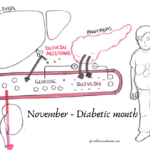
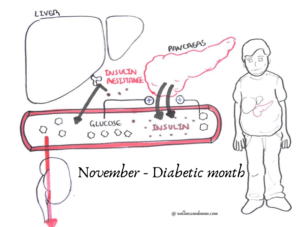 November is national diabetes awareness month. When we realize the magnitude of the damage being done by this one disease it really is important to make everyone aware of how to avoid and reverse this disease. Diabetes affects over 29 million Americans and is a major problem in many other countries that have adopted a Western diet and lifestyle.
November is national diabetes awareness month. When we realize the magnitude of the damage being done by this one disease it really is important to make everyone aware of how to avoid and reverse this disease. Diabetes affects over 29 million Americans and is a major problem in many other countries that have adopted a Western diet and lifestyle.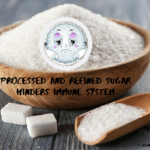
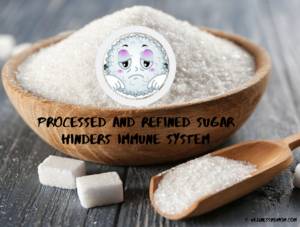 In the last blog titled “fighting back the colds and flu” I pointed out some simple ways to help your immune system win for you. The immune system is key in winning the battle against those colds and flu this season. Those white blood cells are primed and eager to fight the viral invaders. As much as they want to defend us from viruses, bacteria, fungus and even cancer cells they can’t do a whole lot if they are been poisoned. The most common poison these guys have to battle on a continual basis is one that seems so innocent and sweet. Sweet with a capital S. Processed sugar is a potent and effective way to cripple our white blood cell fighting power. Studies have demonstrated that when white blood cells are exposed to elevated levels of sugar they become sluggish and move slowly. “By drinking 1 Liter bottle of soda or by eating 100 gram sugar (about two cans of soda), the reactivity of WBCs reduces 40%. This can make our immune system disable for 4 or 5 hours.” (1)
In the last blog titled “fighting back the colds and flu” I pointed out some simple ways to help your immune system win for you. The immune system is key in winning the battle against those colds and flu this season. Those white blood cells are primed and eager to fight the viral invaders. As much as they want to defend us from viruses, bacteria, fungus and even cancer cells they can’t do a whole lot if they are been poisoned. The most common poison these guys have to battle on a continual basis is one that seems so innocent and sweet. Sweet with a capital S. Processed sugar is a potent and effective way to cripple our white blood cell fighting power. Studies have demonstrated that when white blood cells are exposed to elevated levels of sugar they become sluggish and move slowly. “By drinking 1 Liter bottle of soda or by eating 100 gram sugar (about two cans of soda), the reactivity of WBCs reduces 40%. This can make our immune system disable for 4 or 5 hours.” (1)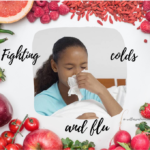
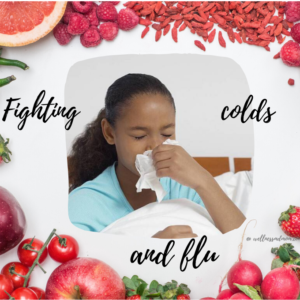 The weather is changing and with the cold climate comes those dreadful colds and flu. You already hear your kids sniffling, sneezing and coughing and you are bracing for your turn. Those bugs seem to be no respecter of persons as they diligently make their rounds till everyone is whimpering at their mercy. Is it even possible to put up a fight against those nasty viruses? It most certainly is! Understanding your enemy and equipping your own defense system is one way to prepare for the impending battle. The battle which you hope to win.
The weather is changing and with the cold climate comes those dreadful colds and flu. You already hear your kids sniffling, sneezing and coughing and you are bracing for your turn. Those bugs seem to be no respecter of persons as they diligently make their rounds till everyone is whimpering at their mercy. Is it even possible to put up a fight against those nasty viruses? It most certainly is! Understanding your enemy and equipping your own defense system is one way to prepare for the impending battle. The battle which you hope to win.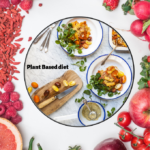
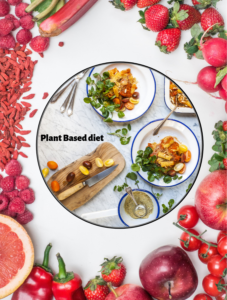 There are so many diets out there it can easily become overwhelming. Sometimes my patients mention new diets to me that I have never even heard off. New ones just keep popping up. I’ve often toyed with the idea of creating my own diet. But what would I call it? The DKD (Dr Kathy Diet), kind of catchy. But seriously, there really isn’t a need for a new diet because the evidence is overwhelming for the absolute best diet to promote health. Any guesses? The Mediterranean diet is a popular one with fairly good evidence to support long lasting health. The emphasis is often drawn to its fish and olive oil component when actually what makes that diet so healthy is its strong emphasis on whole foods, fruits and vegetables. It also strongly encourages enjoying meals in a positive social setting with family and friends. Something that’s missing in our fast paced society.
There are so many diets out there it can easily become overwhelming. Sometimes my patients mention new diets to me that I have never even heard off. New ones just keep popping up. I’ve often toyed with the idea of creating my own diet. But what would I call it? The DKD (Dr Kathy Diet), kind of catchy. But seriously, there really isn’t a need for a new diet because the evidence is overwhelming for the absolute best diet to promote health. Any guesses? The Mediterranean diet is a popular one with fairly good evidence to support long lasting health. The emphasis is often drawn to its fish and olive oil component when actually what makes that diet so healthy is its strong emphasis on whole foods, fruits and vegetables. It also strongly encourages enjoying meals in a positive social setting with family and friends. Something that’s missing in our fast paced society.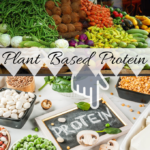
 When I advise folks to transition to an all plant diet the biggest concern they voice is about PROTEIN? Where am I going to get my protein? The fact is we have all been taught that the best source of protein is from animal meat. This myth has been put on trial and busted over and over again but the memo was never made public. Really … I wonder why?
When I advise folks to transition to an all plant diet the biggest concern they voice is about PROTEIN? Where am I going to get my protein? The fact is we have all been taught that the best source of protein is from animal meat. This myth has been put on trial and busted over and over again but the memo was never made public. Really … I wonder why?
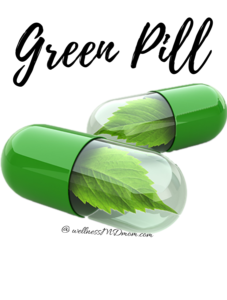 Anything worth having requires some effort to get it. If you want a vibrant marriage you need to put time into maintaining the relationship, if you want a successful career you have to sacrifice to make it to the top, if you want well-adjusted children you have to dedicate quality time to nurturing them throughout life. It is the same principle with health. If you want great health full of energy and vitality you need to be willing to put the effort in to get it.
Anything worth having requires some effort to get it. If you want a vibrant marriage you need to put time into maintaining the relationship, if you want a successful career you have to sacrifice to make it to the top, if you want well-adjusted children you have to dedicate quality time to nurturing them throughout life. It is the same principle with health. If you want great health full of energy and vitality you need to be willing to put the effort in to get it.
 There’s a misconception swirling around that multiple small meals a day is ideal for health. Or that 3 meals with 2 – 3 snacks is the best way to avoid hunger and control your calorie intake. When I first had a patient mention this to me in the office I almost fell off my chair as I asked “where did you get this from”. She explained this came from her dietician and I knew we were in for problems if my patient followed that advice. Since that time I have heard this notion repeated on multiple occasions and I always want to break out and do a physiology lesson so folks could realize that this is not how our bodies were designed to function. The physiology of digestion is such that food begins to break down as soon as we place it in our mouth. It then makes its way to the stomach where it takes between 4 – 6 hours for the meal to be well digested. After this the food passes to the other parts of the system for further processing. Notice it takes at least 4 hours for food to leave the stomach and it is important that we give this delicate organ the time it needs to get the job done. When you add food in the middle of a digestion cycle the stomach becomes overworked and fatigued. That’s when we get symptoms of indigestion, bloating and that sour stomach feeling. Our bodies were designed to have 2 to 3 meals a day with nothing in between except water. Many folks eat 5 to six times a day and some folks graze continually, always munching on something or drinking a sugary beverage. This habit of snacking is really hazardous to our health in more ways than one. Eating in between meals leads to weight gain, indigestion, heartburn, mental fatigue and gas.
There’s a misconception swirling around that multiple small meals a day is ideal for health. Or that 3 meals with 2 – 3 snacks is the best way to avoid hunger and control your calorie intake. When I first had a patient mention this to me in the office I almost fell off my chair as I asked “where did you get this from”. She explained this came from her dietician and I knew we were in for problems if my patient followed that advice. Since that time I have heard this notion repeated on multiple occasions and I always want to break out and do a physiology lesson so folks could realize that this is not how our bodies were designed to function. The physiology of digestion is such that food begins to break down as soon as we place it in our mouth. It then makes its way to the stomach where it takes between 4 – 6 hours for the meal to be well digested. After this the food passes to the other parts of the system for further processing. Notice it takes at least 4 hours for food to leave the stomach and it is important that we give this delicate organ the time it needs to get the job done. When you add food in the middle of a digestion cycle the stomach becomes overworked and fatigued. That’s when we get symptoms of indigestion, bloating and that sour stomach feeling. Our bodies were designed to have 2 to 3 meals a day with nothing in between except water. Many folks eat 5 to six times a day and some folks graze continually, always munching on something or drinking a sugary beverage. This habit of snacking is really hazardous to our health in more ways than one. Eating in between meals leads to weight gain, indigestion, heartburn, mental fatigue and gas.